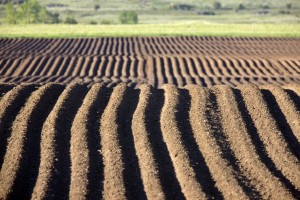Source: thinkprogress.org
Published: April 7, 2016

CREDIT: SHUTTERSTOCK
What if something as simple as the dirt under your feet could help mitigate some of the worst of climate change? The Earth’s soils contain a lot of carbon, and helping to manage and restore them could be a key way to help tackle climate change, according to a recent study in Nature.
Soils are already huge stores of carbon, and improved management can make them even bigger
The study, published by a group of international scientists, suggests that using “soil-smart” techniques for soil management could sequester as much as four-fifths of the annual emissions released by the burning of fossils fuels. These techniques include planting crops with deep roots, which help keep soil intact and encourage the growth of microbial communities that help trap soil carbon, and using charcoal-based composts. The study also calls for a wider adoption of sustainable agriculture techniques — things like no-till farming, which involves growing crops from year to year without disturbing the soil and has been shown to potentially help soil retain carbon, and organic agriculture, which also has shown some promise in restoring and maintaining soil health.
“In the fight to avoid dangerous climate change in the 21st century we need heavyweight allies,” Dave Reay, a professor at the University of Edinburgh and one of the paper’s co-authors said in a press statement. “One of the most powerful is right beneath our feet. Soils are already huge stores of carbon, and improved management can make them even bigger.”
The Earth’s soils store massive amounts of carbon — more than three times the amount that is in the atmosphere, and four and a half times as much as in all plants and animals.
When soil or the microbes within it are disturbed, however — through things like grassland to farmland conversion, for instance — they can release carbon into the atmosphere, exacerbating climate change.
“If the soil carbon reserve is not managed properly, it can easily overwhelm the atmosphere,” Rattan Lal, director of the Carbon Management and Sequestration Center at Ohio State University, who was not involved with the study.
This article no longer exists at the Source link above. It can be found in the Matteroftrust.org Resource Library.
